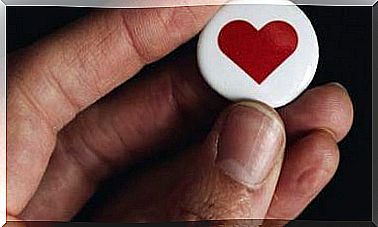Tidying Up The House: 7 Steps To Throw Away The Things You Don’t Need
It happens to all of us, there comes a time when you roll the blanket over your head and start taking things out of cupboards and drawers to eliminate the unnecessary and create order, but often you don’t know where to start. We explain how to achieve your goal.

Are your closets about to explode? Is what you need always lower or behind? Haven’t used three-quarters of the things in your closets for over a year, while the things you use every day make up only a small part? If so, surely your relationship with material things and with your house is getting complicated. You should take action and simplify your life, but where do you start?
Don’t be afraid to throw things away! If you carry out the cleaning operation to the end you will realize that it is a real step to free yourself. Never regret parting with superfluous things. Of course, there will always be a time when you will need exactly the part that you just discarded two weeks ago, but there is always the possibility of reaching for an alternative.
If it’s not easy for you to decide what’s superfluous in your home, here are some inspiring guidelines and ideas on the benefits of not hoarding.
How to start tidying up your house
If your motivation approaches zero even before you start, it’s probably because you have the wrong approach. You feel like a heavy and exhausting task is coming your way, but the following tips will help you break the seemingly unsolvable task into small, manageable sections and make it that much easier to tackle.
- Create the right atmosphere to order. You may be helped by dynamic music or the company of a friend or family member to help you with this activity.
- Choose a day with bad weather. On a day like this, being outside is no fun and ordering is probably the best thing to do. You will not only free up cabinets and drawers, but also your body and mind.
- Start with a small task, such as the shelf or drawer where keys are kept, car papers, sticky notes, pens … If you work topic by topic instead of cleaning an entire room, you will go faster and it is the more likely you are to be successful.
- Have boxes, cardboard boxes, sacks or the like ready in which to put things with three criteria: garbage, temporary storage and later use.
- Thoroughly clean everything, compartment by compartment of cabinets and drawers. Don’t think about cleaning later.
- Keep the things you use regularly in the most logical places. You will be surprised how few things you usually need.
- Everything else remains out of date, preferably in the provided containers (garbage, temporary storage and later use).
How do you get rid of the things you don’t need?
So far it has been easy, but now you are faced with things that you don’t really need because you have included them in any of the three categories. Again, divide them into three groups:
- Trash, because, for example, it is broken, very dirty or completely useless. You can remove it quickly and it will not cause you any headache. But it classifies the garbage well to place it in the appropriate container or take it to a green point.
- Indecisive, because it was not a cheap purchase or you could use it again or recycle it. Here it is worth considering what can actually be kept for a certain period of time by placing it in a labeled box, for example, in the basement or in a loft. If this box is still intact after one year, you can discard its contents. The next time you order it automatically becomes “junk”, unless some items are in good condition and you can consider giving them away or selling them; in any case, do it immediately).
- Sentimental, because it is a gift from your parents or you associate it with a special moment. It is the most difficult category. Things that remind you of certain people or events, whether funny or sad, should not be thrown away, but dedicate a special place to them or get them a separate box. You can do this from time to time to please your memories and keep them alive. But what do you do with granny’s knit sweater that doesn’t suit your tastes and has never really fit you? Or with the mother-in-law’s apple cutter, which you never used because it is so much easier for you to cut the apple with the knife? Here you must be honest with the grandmother, the mother-in-law and with yourself. Maybe someone else thinks these things are cool and practical and you can give them away or sell them.









